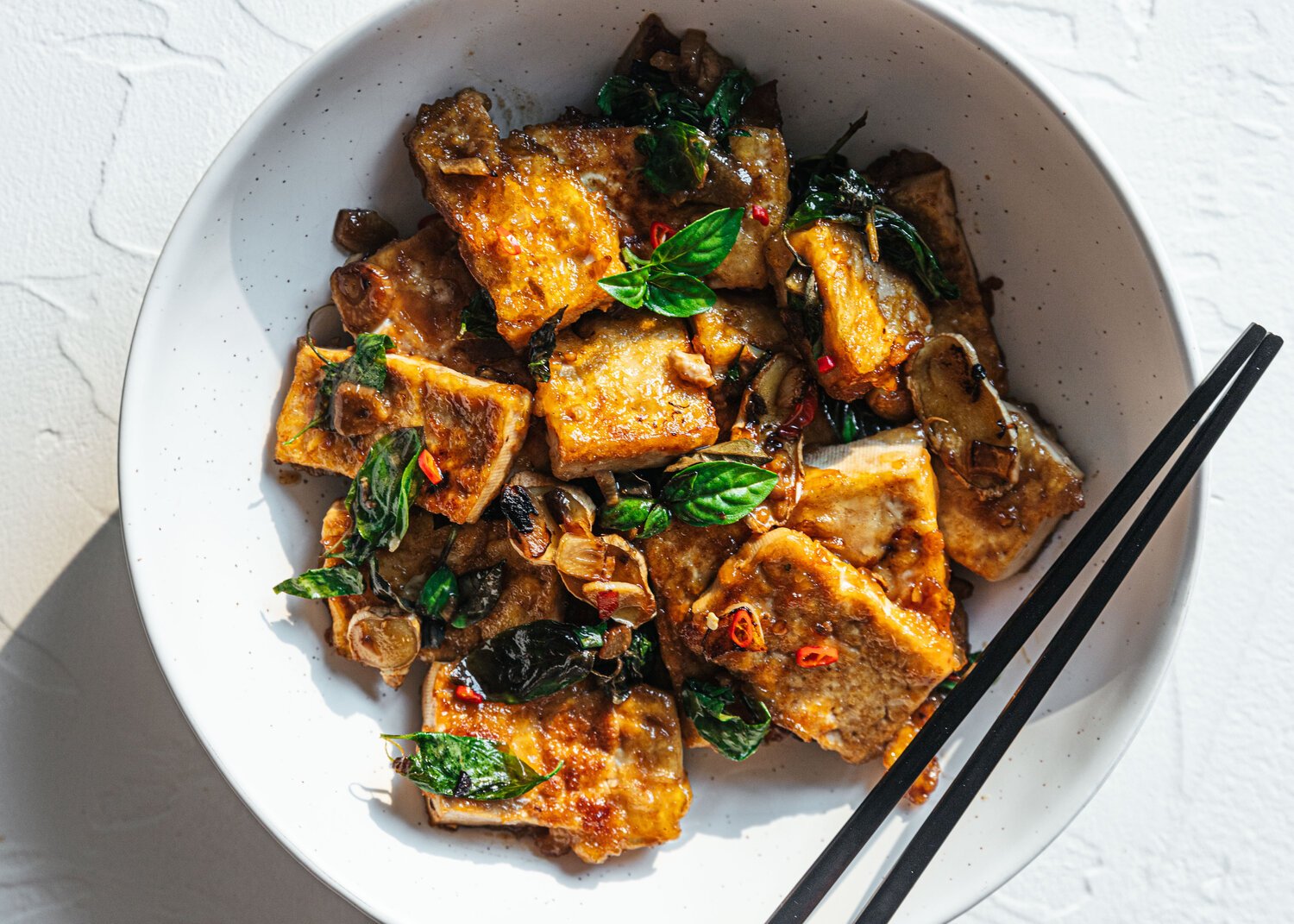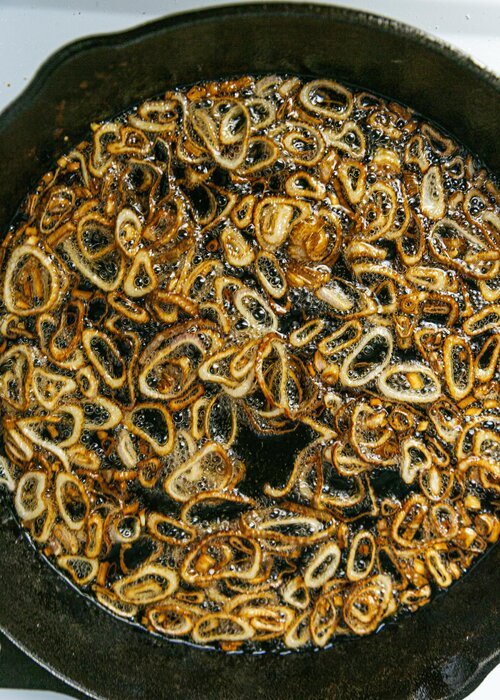A plant-based dish with intensely good flavors.
If you have ever been to Asia — you’ll know what I am talking about when you eat at those hole-in-the-wall street restaurants. A gathering place where all levels of society come together and order enough food to cover several tables. You don’t go there for fine dining but for the clatter of smoky woks, clinks of Taiwanese beer bottles (guava juice for the kids), scooters lined out the door, and the non-stop motion of the city.
Traditionally, this dish is made with chicken that I’ve adapted with tofu for plant-based cooking. The name three-cup refers to the equal ratio of rice wine, soy sauce, and sesame oil. The ingredients have evolved and been adapted over time to suit different regions in Taiwan and China.
This is a dish that is healthy enough to be a household staple, though it doesn’t guarantee any leftovers based on experience. The generous amounts of ginger, garlic, basil, and sesame oil create flavors that are intense and captivating to the taste buds.
If you are new to Taiwanese cooking wine/Mijiu 米酒 — I recommend you pick up a bottle at your local Asian grocery (I get mine from T & T in Vancouver). There are substitutes you can use like Chinese rice wine, sake, dry sherry, or plain vegetable stock but you’ll get the best results from Taiwanese cooking wine. It’s what I grew up with.
This is the brand I get from my local Asian store. Made in Taiwan.
Three Cup Tofu
Serves 2,
Ingredients
14 oz (1 package) medium-firm tofu, drained and patted dry
3-inch knob of ginger, sliced into thin pieces*
5 cloves garlic, sliced
1 Thai red chili, chopped into pieces
1 packed cup of fresh Thai basil, roughly chopped
1/3 cup cornstarch
oil for cooking
Sauce
3 tbsp Taiwanese cooking wine 米酒 (sub rice wine/sake/vegetable broth if you must)*
3 tbsp soy sauce or Tamari
3 tbsp sesame oil
1 tbsp sugar
⅓ cup [80g] water
Instructions
1. Dry the tofu with paper towels (I let mine drain on a paper towel while I prep). Slice the tofu in half lengthwise and cut each half into 1cm-thick slices or cubes.
2. Place the cornstarch in a large bowl and coat the tofu slices one by one, on all sides. Add more cornstarch if needed. Lay the coated tofu slices on a large plate for frying, making sure not to overcrowd them.
3. Heat a large frying pan over medium-high heat and add 2 tablespoons of oil. When the oil is hot, fry the tofu until golden and crispy, flipping every 3–5 minutes. This will take around 10 minutes. If the tofu cooks too quickly, lower the heat to medium.
4. While the tofu is frying. Add all the sauce ingredients into a bowl. Stir to dissolve the sugar.
5. Remove tofu from the pan and set it aside in a bowl. In the same pan over medium-high heat, add 2 tablespoons of oil and fry the ginger pieces until brown and golden, around 1 minute. Add the garlic and chili until they are crispy and become incredibly fragrant. Making sure the aromatics do not burn.
6. Pour in the sauce and stir until the sugar has completely dissolved. Add the tofu slices and toss to combine. Lower the heat to medium, add the Thai basil and cook until the sauce has reduced to a syrupy state. Turn off the heat and serve warm with rice.
Cooking Notes:
Ginger: Make sure to fry the pieces until golden brown on all sides. Ginger, unlike garlic — lasts a lot longer in hot oil. Make sure to separate their cooking processes.
Taiwanese Cooking Wine/Rice Wine: See the photo here for the brand I use.
Garnish: Serve with Thai basil, cilantro, or green onions.








